Before you set off on an organised holiday, an information sheet sets your expectations. Yet it is only when you arrive at your destination that the immediate experience reveals the true nature of a country.
The Silk Road trip has left me stumped for words to describe my experience. It was full of contrasts, of light and shade, of colour and pattern, from camels, yurts, madrasahs to eight lane-wide roads, bullet trains and 21st century modernist structures. It was eye-opening and mind-blowing. ‘Sublime’, I think, is about right.
The Silk Road was once upon a time the route of travelling merchants, where goods and ideas were traded and transported to far-off lands. Emerging from years of oppression under the Soviet Union, today Central Asia is in the process of being discovered by the rest of the world.
A group of intrepid pioneers joined Ramblers Walking Holidays inaugural tour to Kazakhstan and Uzbekistan in search of the Silk Road.
The Prep Work
Before you set off on an organised holiday, an information sheet sets your expectations. Yet it is only when you arrive at your destination that the immediate experience reveals the true nature of a country.
As Central Asia was an unknown entity to me, my first step was to locate Kazakhstan and Uzbekistan on a map. I also used Instagram to do some preliminary research of the places on our itinerary. Inspired by what I saw, I packed extra memory and batteries for my camera. I knew I was going to see some amazing sights.
Some Key Facts
- Kazakhstan and Uzbekistan have now both been independent countries since 1991
- Kazakhstan is the 9th largest country in the world. It is landlocked. Its capital, Astana, is the second coldest capital city in the world (after Ulaanbaatar, Mongolia). Kazakhstan is where space travel began, with the launch of the first man-made satellite, Sputnik, in 1957
- Uzbekistan is twice the size of the UK and is one of only two doubly-landlocked countries in the world (the other is Lichtenstein). 92% of Uzbekistan’s land is uninhabitable. It is a developing country, with large natural gas reserves.
Safety
Unlike the better-known ‘stans’, Afghanistan and Pakistan, personal safety is not an issue in Kazakhstan and Uzbekistan. That was a pleasant surprise and something I would like others to be aware of.
Language
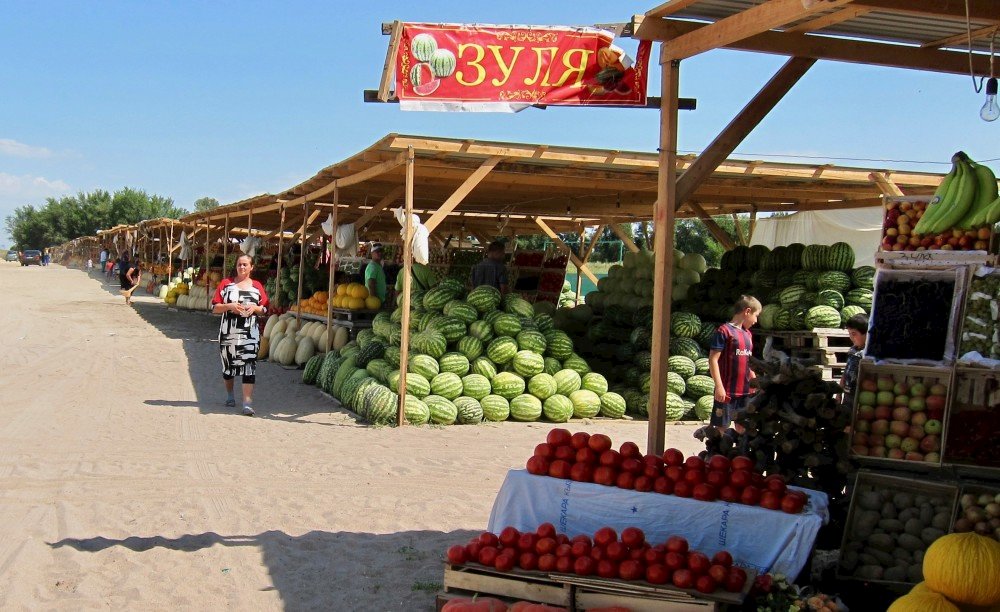
While both countries use Russian as their second official language, Kazakh and Uzbek are Turkic languages, that have nothing in common with Russian. What was unexpected was that Kazakh is written in Cyrillic script, making Kazakhstan itself feel more Russian in character. By contrast the Uzbek language uses Roman script which was instantly recognisable to our eyes, even if the language was not. This made the country feel accessible.
�
The People
The people in Kazakhstan come from 130 ethnic groups, most recently the result of forced migration during the Stalinist era. The legacy is a diverse population. While many people have Asian features, others have pale skin and light-coloured eyes. They are all Kazakhs and dress in western fashion.
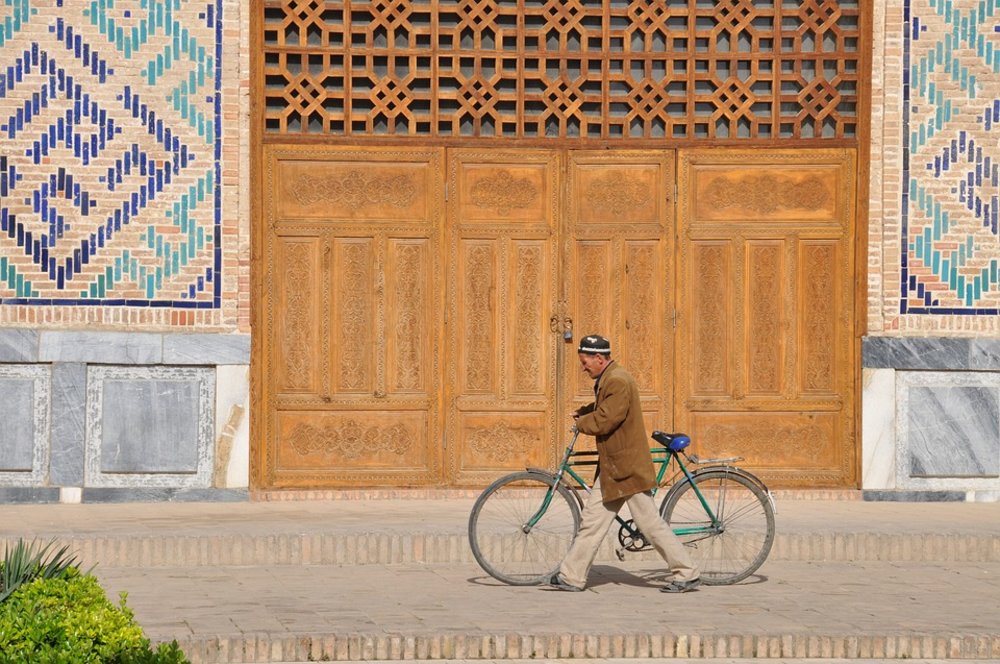
By contrast, 80% of the people of Uzbekistan are ethnic Uzbeks. They have more of a Persian look and adopt, to my eye, a slightly exotic style of dress. Many of the men wear square black caps on their heads, while many of the women wear long colourful dresses and old-fashioned head scarves, more to shield them from the dust and sun than for religious reasons. Despite Uzbekistan being known for its Islamic culture, one sees far fewer hijabs in Uzbekistan than in London. I saw a mere half dozen hijabs in as many days. Burqas are banned.
Major Cities
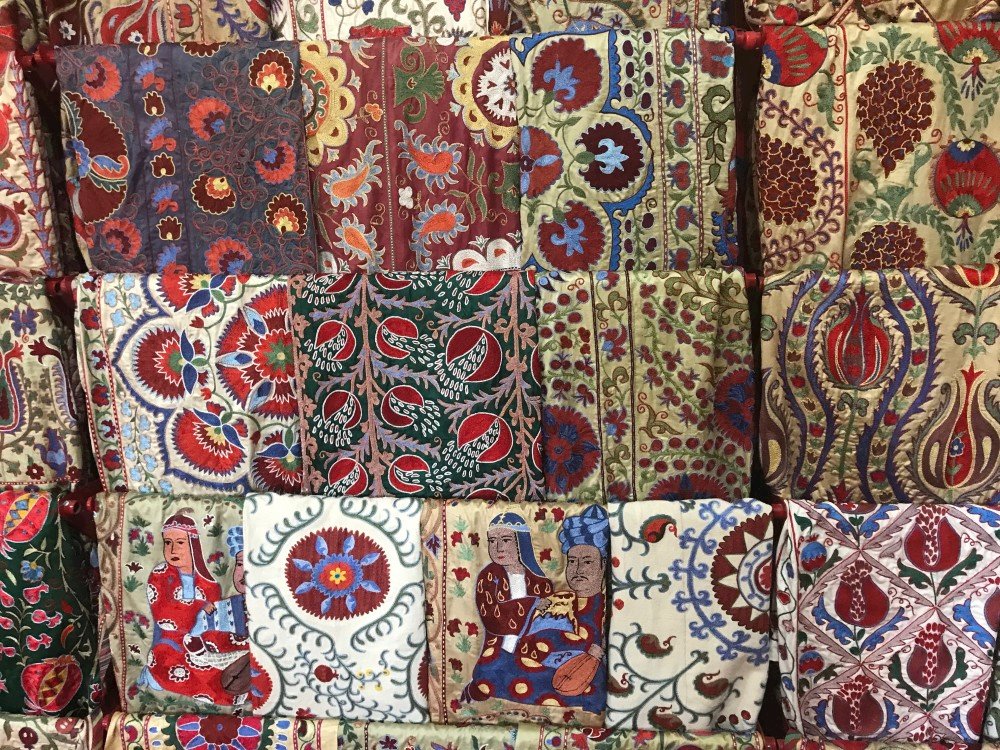 Astana, Kazakhstan
Astana, Kazakhstan
Astana is the modern capital of Kazakhstan, only 20 years in the making so far and still a work in progress. It is very much a city of the 21st century. Despite there being numerous large buildings (three of the most unusual were designed by the British architect, Norman Foster), we encountered few people. (As Astana has a relatively young population, most would have been at work while we were touring the sights.) To counter the lack of history in the city, the newly built Kazakhstan National Museum holds artifacts going back thousands of years from across the country. The most famous is the Golden Man, dated as the First Millennium BC.
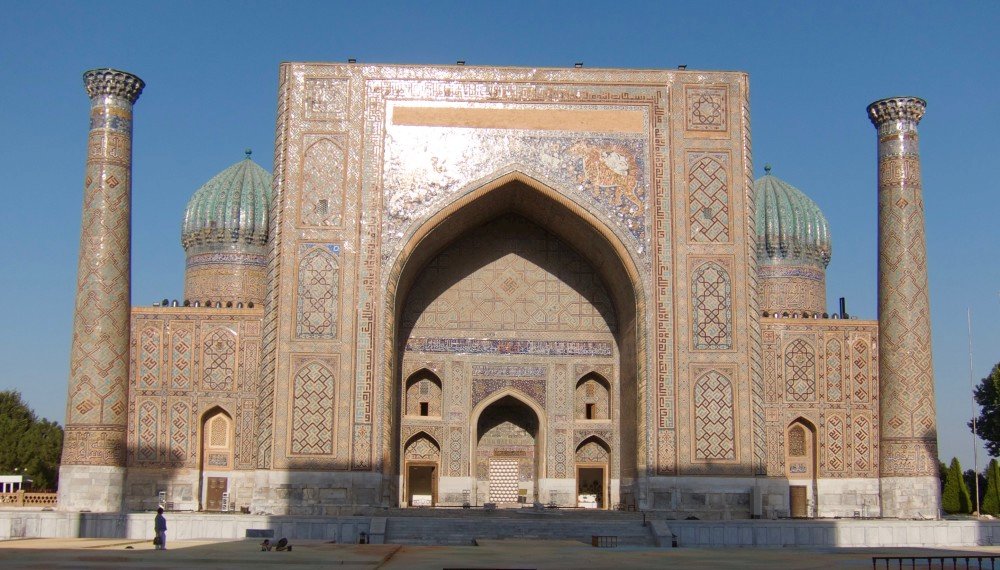 Samarkand, Uzbekistan
Samarkand, Uzbekistan
The cities of Uzbekistan, on the other hand, exude history, with tiled buildings exemplifying the Silk Road. Islamic mosques, madrasahs and mausoleums from the 15th - 17th century dazzle with their patterned tiles. We started in Tashkent, then moved on to Khiva, then Bukhara and finally Samarkand. The sights kept getting bigger and better, building to a crescendo in Samarkand. It was the sheer number of structures, their size, their style and the colour that was unexpected and often overwhelming. A glorious sight.
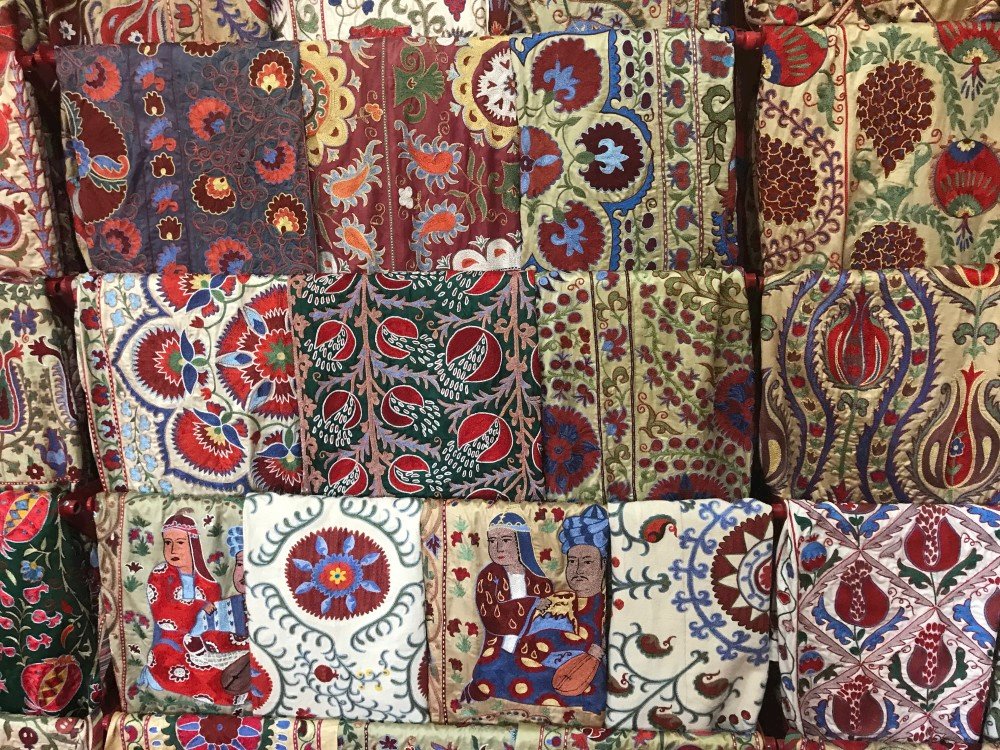
Given the extent of the desert in both countries, the predominance of colour came as a surprise.
In Kazakhstan, it was the greenness of the city of Almaty that was unexpected. Mature trees line the streets, providing shade from the hot sun, and the surrounding mountains are covered in even more trees.
In Uzbekistan, it was not just the Islamic buildings and women’s dresses that were colourful. So too were the handicrafts (silk carpets, embroidery) and spices in the market.
So close and yet so far
This trip opened my eyes and my mind to a fascinatingly different part of the world. Our local guides were excellent communicators, introducing us to their respective country.
Kazakhstan and Uzbekistan have both made headway since gaining independence from the Soviet Union in 1991. It was interesting to learn, despite their proximity to each other, how different their approach to development has been. Kazakhstan has taken a western commercial route in exploiting its resources for profit, whereas Uzbekistan has adopted the Norwegian approach of retaining sovereignty over its resources, reflecting the Uzbek culture of community support.
Central Asia is opening up to tourism. It is not that far away by plane - a mere 6½ hours from London. While the modern buildings and highways will feel familiar, it’s the people, their history and their culture that prove to be intriguing.
.jpg?ni=%2Fimages%2Fno-image.png)
.jpg?ni=%2Fimages%2Fno-image.png)
.jpg?ni=%2Fimages%2Fno-image.png)
.jpg?ni=%2Fimages%2Fno-image.png)
.jpg?ni=%2Fimages%2Fno-image.png)
.jpg?ni=%2Fimages%2Fno-image.png)






